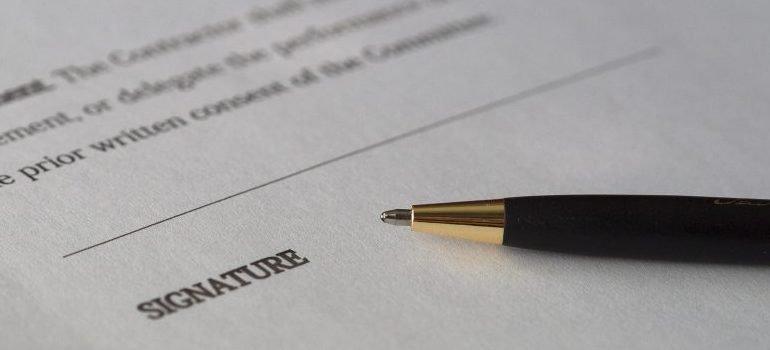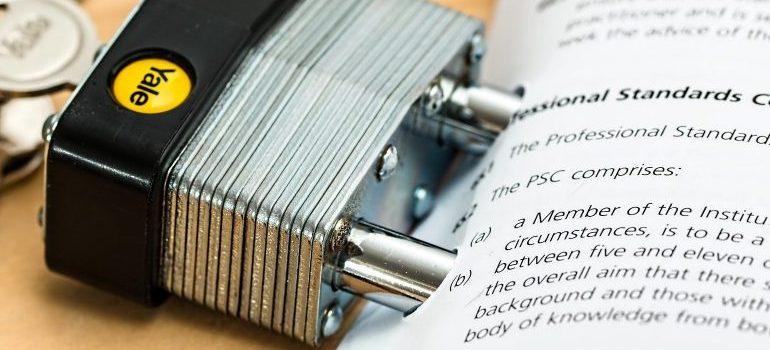Having to file a moving insurance claim is never pretty. There is a lot of room for frustration and other bad feelings. The best thing you can do is approach it methodically if you want to avoid most of them. Many a great mover will work with you, however, and figure out the best way to satisfy everyone. Even so, you need to know what is the best process if you end up needing to file a moving insurance claim. So, without further ado, this is the best way to:
File a moving insurance claim against moving company
The list below will provide you with the necessary steps to file a claim after your long-distance move. You will achieve the best results if you go through the list in order. However, by doing these steps out of order, you will not endanger your moving insurance claim, you just might have to retrace your steps from time to time.
So, you need to:
- Document the value and harm that was done to damaged items
- Keep all documentation of the communication between you and your mover
- Thoroughly review the moving contract with the moving company
- Inform the moving company that you are filing the moving insurance claim
- File moving insurance claim!

Document the value and harm that was done to damaged items
The first thing that you need to do, and the most important one, is to carefully document everything. This means that you need to prove how much your items are worth, first of all. The best way to do this is if you happen to have the receipts from when you purchased each damaged item. However, more often than not, you will not have these receipts.
Find your items on the internet and see how much they are worth today. It can happen that their worth dropped considerably but that is what you will need to work with. In the case that your items do not exist on the internet, search for similar ones that serve the same purpose.
After that, you need to document what kind of damage your items suffered, especially if you have used your movers packing services. Take detailed photographs of the damage. Again, it would be best if you had the photos of the items in their original condition but it is not necessary. The important thing is to document the damage.
Keep all documentation of the communication between you and your mover
You and your mover have most likely shared quite a bit of communication. Most of the time, you will have a lot of e-mails and written documents from your movers. You need to save those correspondences, just in case that your moving company tries some shenanigans. Usually, they will not do so but you can never be careful enough. Everything that you have agreed upon and that is in writing, you need to have. Simple as that. If you have some additional documentation that pertains to extra moving services, you might want to include that as well. While it might not directly involve moving insurance, it will give you an air of preparedness and meticulousness. Which is always a good air to have.
Thoroughly review the moving contract with the moving company
You and your moving company have signed a moving contract. That contract is usually only there for formalities sake and not really used at all. After all, the vast majority of moves are conducted without a single issue. And because of that, people tend not to read the moving contract carefully. This is obviously bad. You always want to read everything that you are signing, really carefully. Even if you think you know what is exactly in the contract, give it another read. There may be clauses that are not that easy to read or understand and which may pertain to the issue at hand. Make sure that you read everything carefully, especially the parts that concern insurance. However, knowing how to hire a moving company will help you to avoid most of the unpleasant situations.

Inform the moving company that you are filing the moving insurance claim
After arming yourself with as much knowledge, facts, and evidence, it is time to notify your movers that you will be filing the insurance claim. This is the time of negotiations. Many moving companies will try to provide you with a satisfactory solution, so neither party needs to waste its time with needless claims. Depending on the moving company in question, the solutions can range from discounts on their future services to full reimbursement. However, this is not an exact science, so to speak. Your negotiating skills will be put to the test. That is why we told you to gather all that data beforehand, so you will have the maximum amount of influence in this stage.
The best way to file a moving insurance claim is never to get to the point of filing it. If you can get everything that you want straight away, there is no need for a claim, is there? But to be perfectly honest, it is not often that you can finish everything without filing the claim. The fact of the matter is that solutions that moving companies can offer and the demands of the customers do not align, most of the time. And that is when you need to:
File moving insurance claim!
Alright, here comes the legal stuff. First of all, you need to file a moving insurance claim within nine months of the final delivery date for your items. As with every single claim, the sooner you start the process, the better it will be. The best time to start is as soon as you get all the necessary forms.
You will need several documents with your claim, in order to have the best chance for a favorable outcome.

- A copy of your own inventory list
- A copy of the inventory list that moving company created
- Photos of your items, both before and after the damage
- Proof of the value of your items (receipts, statements from your bank, etc.)
- A short summary of damage timeline (when and how were the items damaged)
Your claim has a due date of 150 days maximum in total to be resolved. Thirty days for the company to acknowledge it and 120 days to resolve it.
